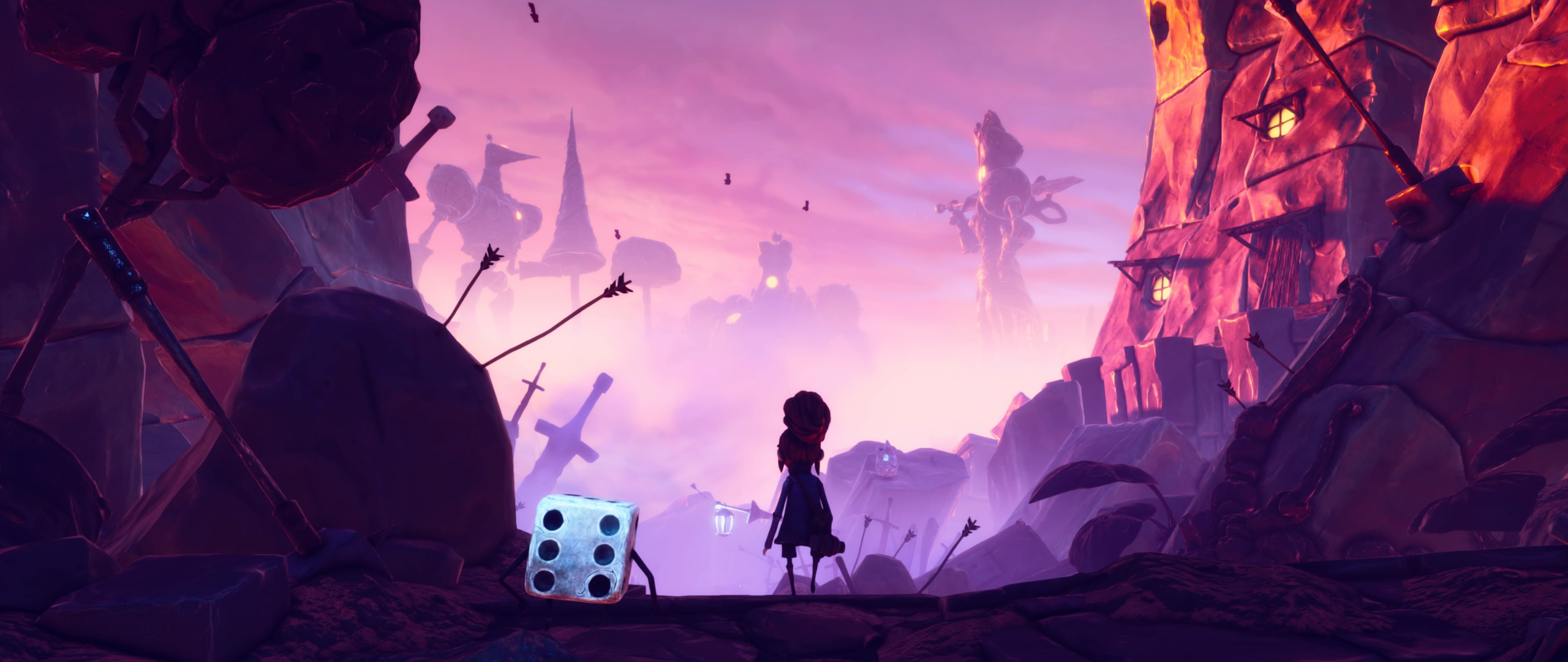Laptop Mag Verdict
Lost in Random’s wonderfully presented characters and environments carry all the weight in the face of underwhelming gameplay.
Pros
- +
Solid worldbuilding
- +
Charming script
- +
Satisfying exploration
- +
Combat can be fun
Cons
- -
Lacks mobility and platforming
- -
Weak puzzles
- -
Messy board game gimmicks
- -
Too much talking
Why you can trust Laptop Mag
Lost in Random is a compelling homage to the works of Tim Burton and films from studio Laika. It’s easily comparable to The Nightmare Before Christmas or Coraline. Any fans of woeful fairy tales and stop-motion animation are sure to find something to like within the twisted world of Random. This is where the game excels; its grim yet humorous interactions, dark atmosphere, and eccentric environments coalesce into a wicked world that inspires the desire to explore.
Unfortunately, Lost in Random is also mechanically underwhelming. Combining an action RPG, card game and board game is a unique concept, but it lacks polish. There’s a few poorly realized board game gimmicks, a janky aiming system, and a lack of fresh enemy designs. The combat is competent enough to be fun, as the game boasts some memorable boss fights and encounters, but it gets frustrating.
The omission of platforming feels like an oversight — jumping puzzles and challenges would’ve been perfect for a game like Lost in Random. Additionally, the few puzzles that do exist are so easy that they might as well not be there, and the first half of the game is overwhelmed by dialogue that almost put me to sleep. I wouldn’t rank Lost in Random among the best PC games around.
Even’s journey
Lost in Random opens with two little girls, Even and Odd, playing a pretend game of dice with their friends. Amid an argument of who belongs to which society, the group hears the wicked sounds of Nanny Fortuna, a sinister servant of the wicked queen, plotting to kidnap another child. The two run home and hide in their basement shortly before a mechanical spider-like monster breaks in and steals Odd. It’s the girl’s 12th birthday, which means she’ll have her fate decided for her by a magical dice.
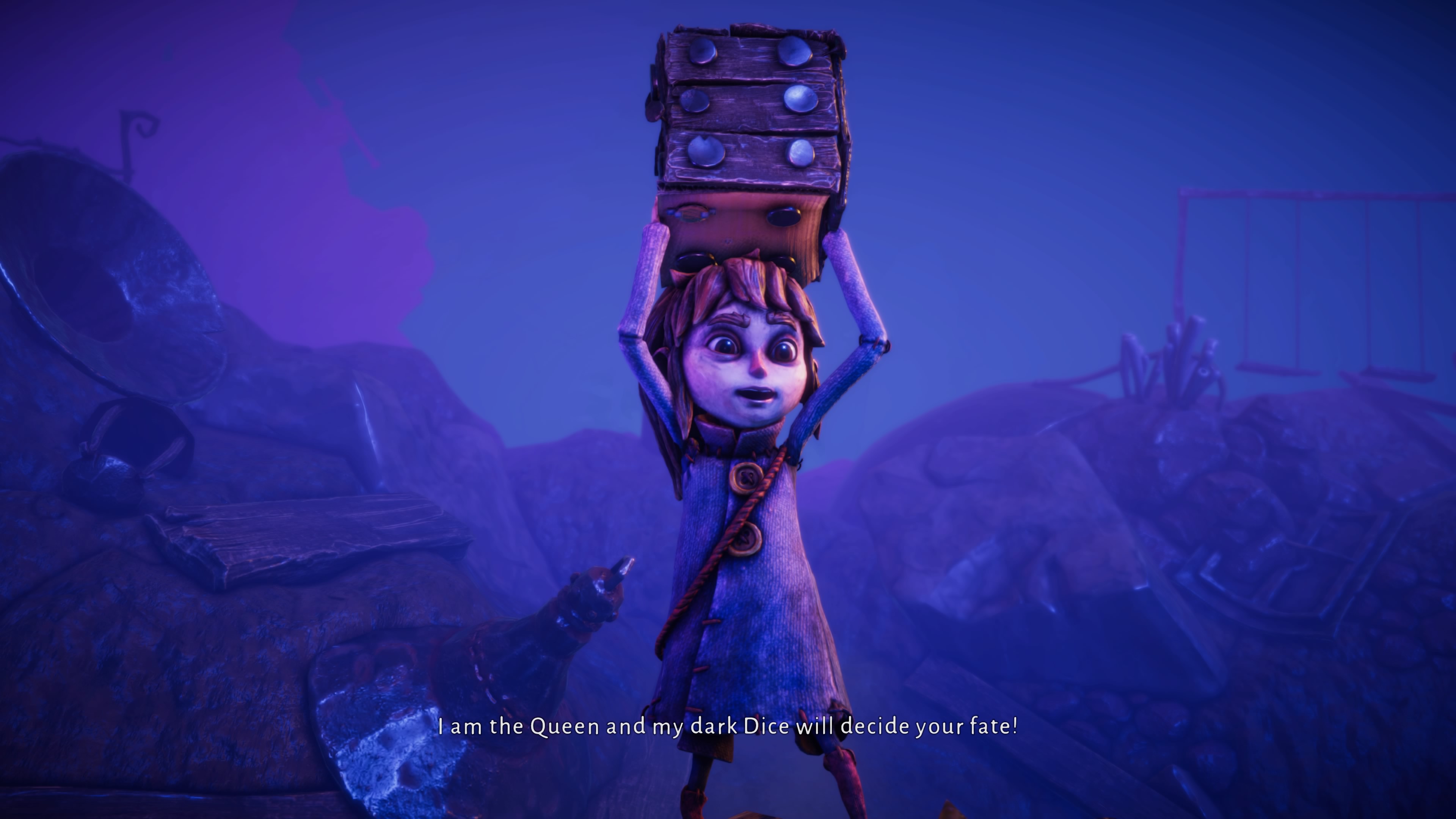
Odd tosses the special dice and it lands on a one, which would normally mean that she gets to remain in her beloved home of Onecroft. However, a mysterious force pushes it to a six, meaning Odd is destined to live up in the palace with the Queen of Random. She’s quickly taken away, and the two sisters are now completely separated.
One year later, Even is guided outside her home by a ghost-like entity which resembles her sister. After following this spectre for a short while, she finds the toy she had given Odd on the night she was abducted. And with this revelation, Even knew she had to save her sister. She runs away from home and stows away on a boat that takes her outside of her town. Shortly after, Even meets a magical dice, named Dicey, that gives her the ability to call upon powerful cards. The girl is now a Dice Wielder, and she goes on a quest to defeat the wicked queen.
Lost in Random’s story is most compelling due to its characters. Everyone you meet in the world of Random has something to say, which is both a boon and a fault. On one hand, there’s plenty of amusing dialogue, intriguing world-building, and likable personalities, but there’s also an absurd amount of talking. Half of my time in the world of Random was spent conversing with the game’s NPCs. It’s usually entertaining, but there are plenty of moments where it feels redundant, information is repeated, or jokes just don’t land.
Sign up to receive The Snapshot, a free special dispatch from Laptop Mag, in your inbox.
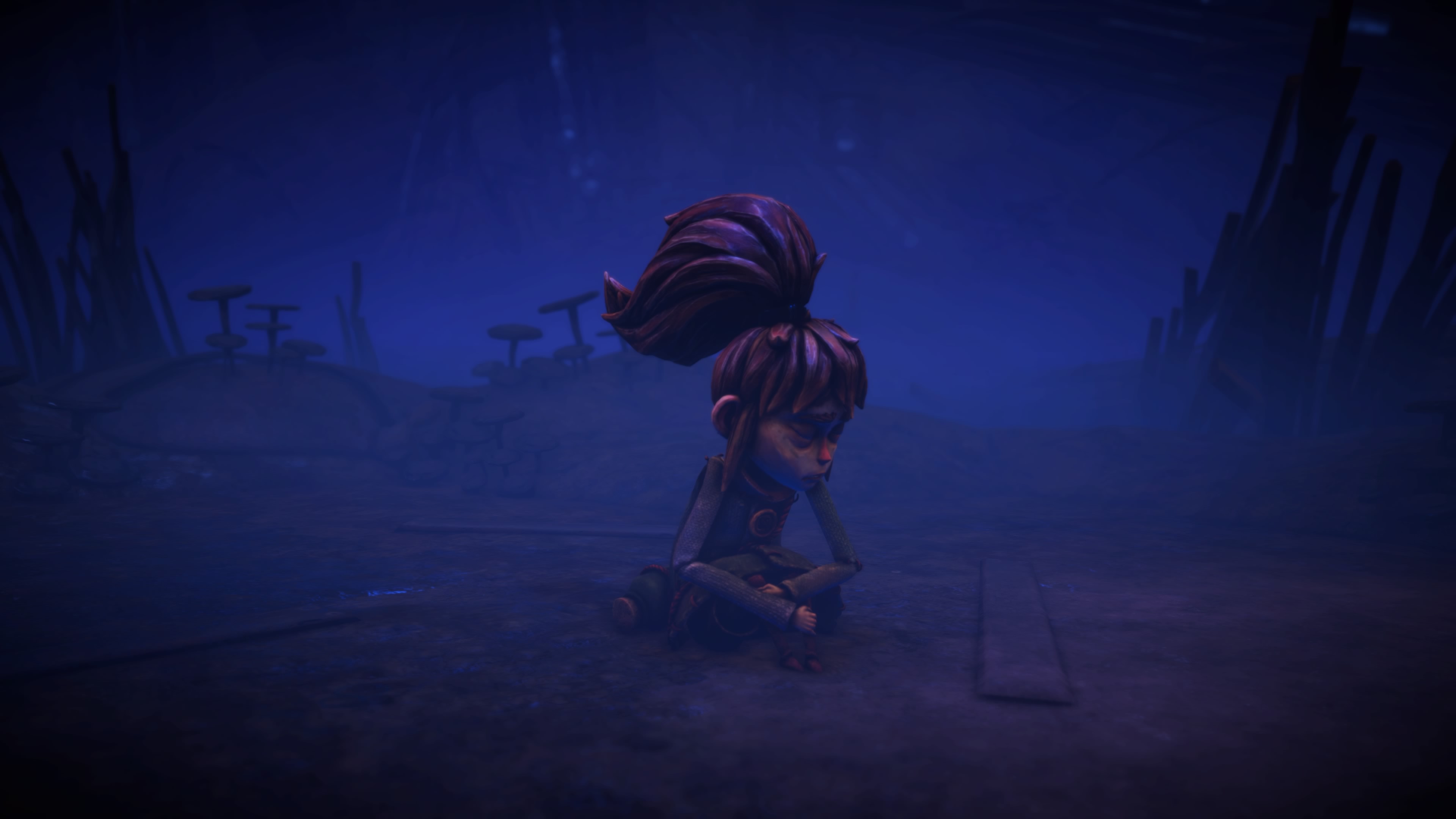
Thankfully, the narrative itself is engaging. Even experiences an emotional arc when she realizes that attempting to topple the queen’s totalitarian rule is futile. While she’s full of courage, Even is still just a kid. Katey Parr does an excellent job translating the sorrow and fear of an eleven-year-old girl: there’s no more bravery and no more hope, just a child who wants to go home.
I was also impressed by the nature of certain dialogue choices. When I met with the Count of Threedom, I had to retrieve a specific item in his possession. I made him aware that I needed it, but he claimed he would send me on a quest to find something else first. While I did listen to his request, I was presented with the option to ask if I could just have the item I came for. He promptly said “no,” but I was able to keep pushing, so I did.
After a while, the game gave me an option to threaten to assassinate him. He scolded me, claiming that murder wasn’t something I should joke about. Finally, the last option let me tell him that I wasn’t joking — he was shocked, and out of a fear for his life, he gave me the item I came for. I completely bypassed his quest and just took the item from him by picking a certain tree of dialogue choices. This brought a gigantic smile to my face; moments like these are what make Lost in Random magical.
Cards? Boards? Swords?
Lost in Random’s combat system combines elements of an action RPG, card game and board game. When a battle begins, players shoot crystals growing out of foes with their slingshot and collect the fallen shards with Dicey. When around four or five shards have been picked up, the player passively draws a card.
After at least one card has been drawn, the player can enter a plane that freezes time to select from whatever’s in their hand, with a maximum of five cards drawn at once. Simultaneously, Dicey is automatically rolled, and this result determines how many tokens you can spend in battle. Every card has an associated cost, ranging anywhere from 0 to 3. Each of the 34 cards in the game have different uses. Some provide a powerful weapon to slay foes, a health potion, or an ability to swap your slingshot out for a strong bow.
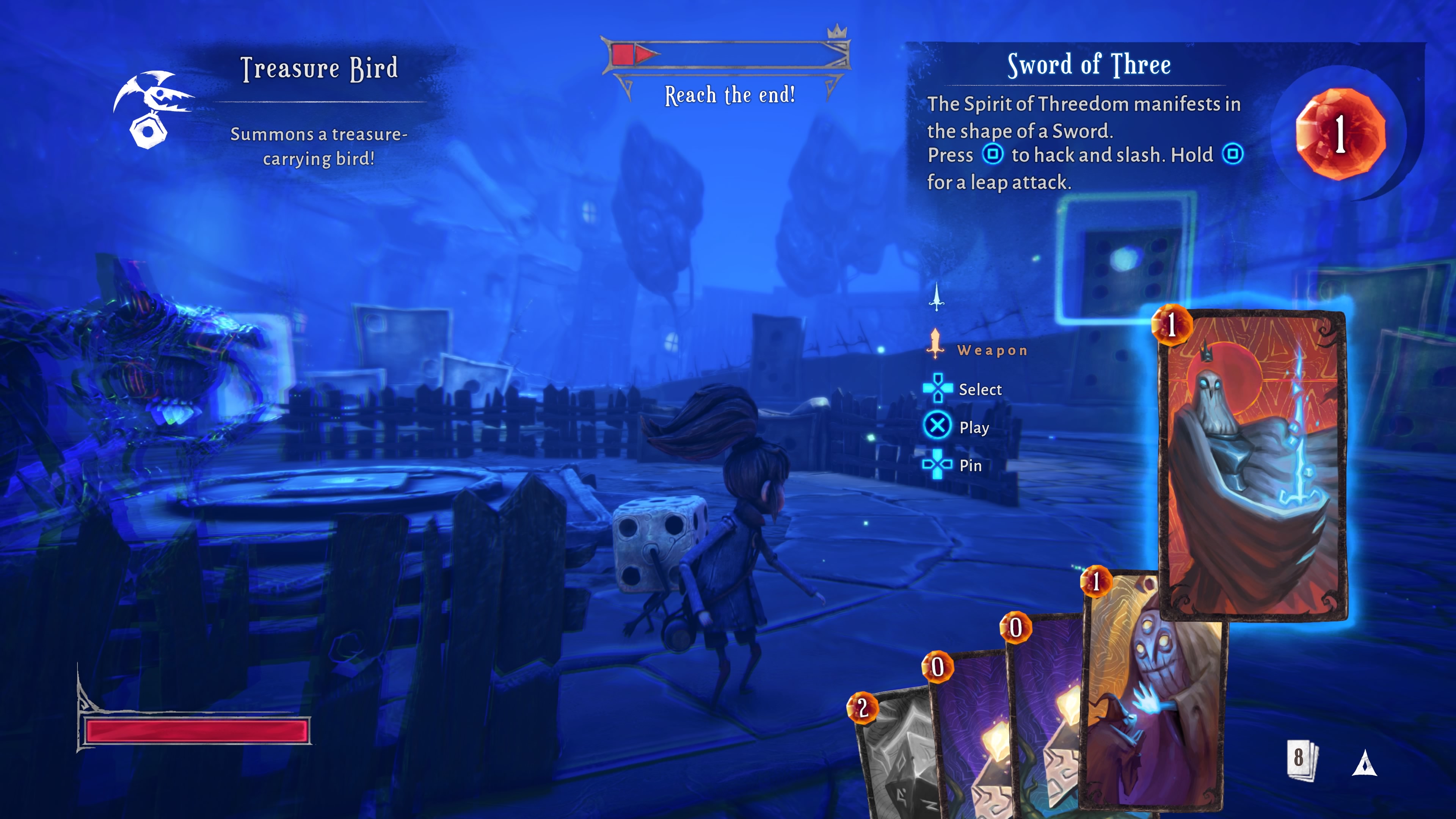
Dodging enemies, placing bombs and whacking them with a sword or mace is a jolly good time. Balancing the need to stay defensive while collecting crystals and then having a brief moment of supreme power where you can unleash your arsenal makes for an exciting dynamic.
But the combat’s most pressing problem involves the board game gimmick, which forces players to complete a different objective to win a battle. This takes away from the dynamic nature of combat and forces the player to fight a particular way depending on the circumstance.
One board game encounter has the player roll their dice to spawn a number of objects, and if the objects fall into the hole that’s sitting at the center of the arena, the player gets closer to winning. But to roll Dicey, the player needs to draw only one card. This caused me to spam the dice rolls, making the fight less than engaging.. It felt too exploitable and took away from the combat.
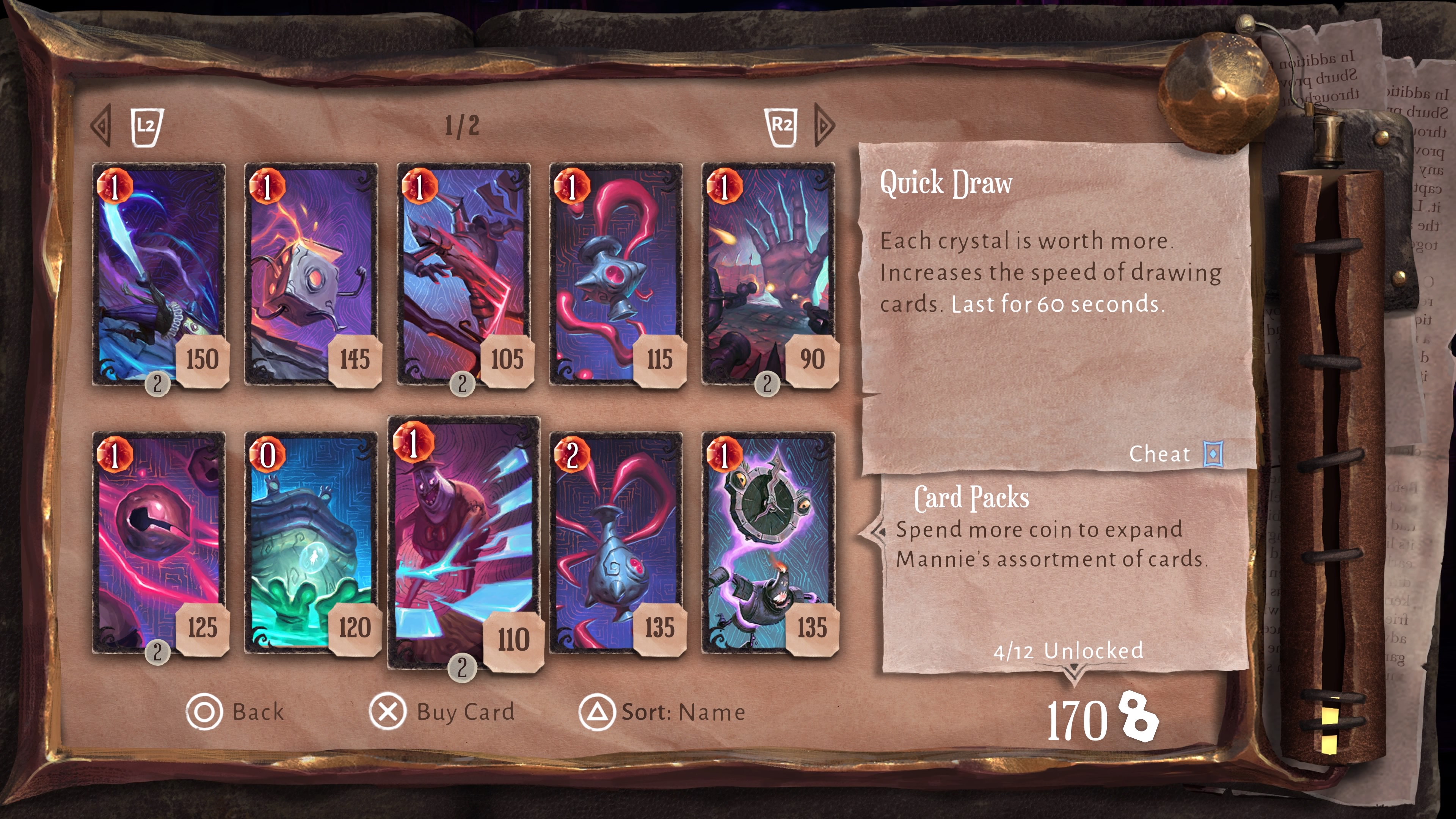
Another board game forced the player to deal damage against a boss only when their chess piece was at a specific spot on the field. It became a tedious back and forth of praying that my dice would land on the right number so I could proceed with the fight. There was no challenging element here; I was just waiting to win.
Even during standard encounters, the game gets repetitive quickly. There’s a slew of reused enemies that masquerade in reskinned textures with minor changes. Combat is at its most exciting when the player encounters a new boss or enemy type, but it doesn’t happen often enough.
However, I have to complain about the accuracy of ranged abilities. The bow and arrow will occasionally fly into a random direction when pointed at a creature. When selecting where Dicey can go, he sometimes traveled somewhere completely unrelated to where I was pointing.
A world worth exploring
Lost in Random shines most when the player is thrown headfirst into a new part of its dice-ruled world. Exploring the six sides of Random is satisfying, as each area is based upon a different idea and successfully maintains its own identity. To avoid spoilers, I won’t describe every main area in the game, but one in particular stood out as my favorite:
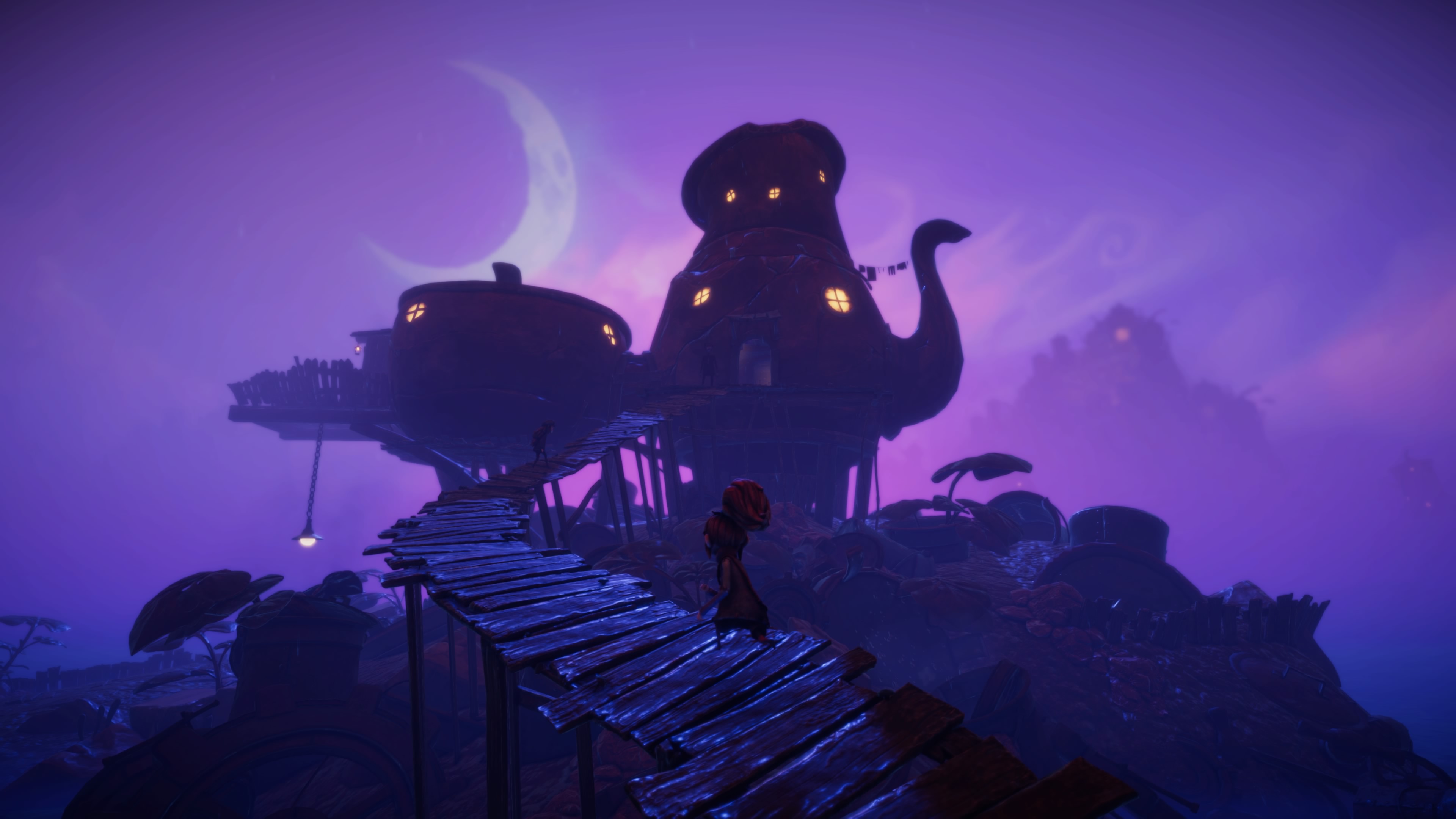
Threedom pits the three children of a dead father against one another in a struggle for power; each of them believes the others might be responsible for his death, so they all pilot giant robots in a futile war with each other. Threedom’s inhabitants are sick of it, as this petty squabble is causing meaningless destruction throughout highly populated areas.
In this world, the player runs through trenches, listens to haunting war stories from its poor inhabitants and must convince each of its rulers to stop their fighting. I’ll never forget the confusing non-linearity of its level design, as each new path I ran down would often lead me to an area I wasn’t even aware existed. It took me until close to the end to understand where I was going, and each part of this world provided a unique encounter, like conversing with the ghost of a dead little girl. I also convinced a cute little monster to not fight for any of the three rulers and instead battle for their own heart. Those are just a couple of Lost in Random’s memorable encounters.

Thanks to Lost in Random’s captivating gothic aesthetic, the game can be quite pretty. Wandering into Two-Town and witnessing abstract, spiraling buildings wrapping into themselves upon the backdrop of a full moon and blue night sky is one particularly gorgeous moment.
Why can’t I jump?
Movement in Lost in Random feels a bit stiff. The game focuses more on grounded movement rather than incorporating platforming elements. The player’s turning circle is drastically reduced while they’re sprinting, which adds unneeded heaviness to controlling Even that makes her feel like an SUV rather than an 11-year-old girl.
Additionally, the player cannot jump. In fact, the only airtime you’ll ever get is when you walk next to a ledge and press X to hop down a level. Lost in Random might feel more dynamic with the inclusion of platforming. An additional layer of verticality while exploring its world would make it all the more pleasant. Currently, all players do is run around and climb ladders.
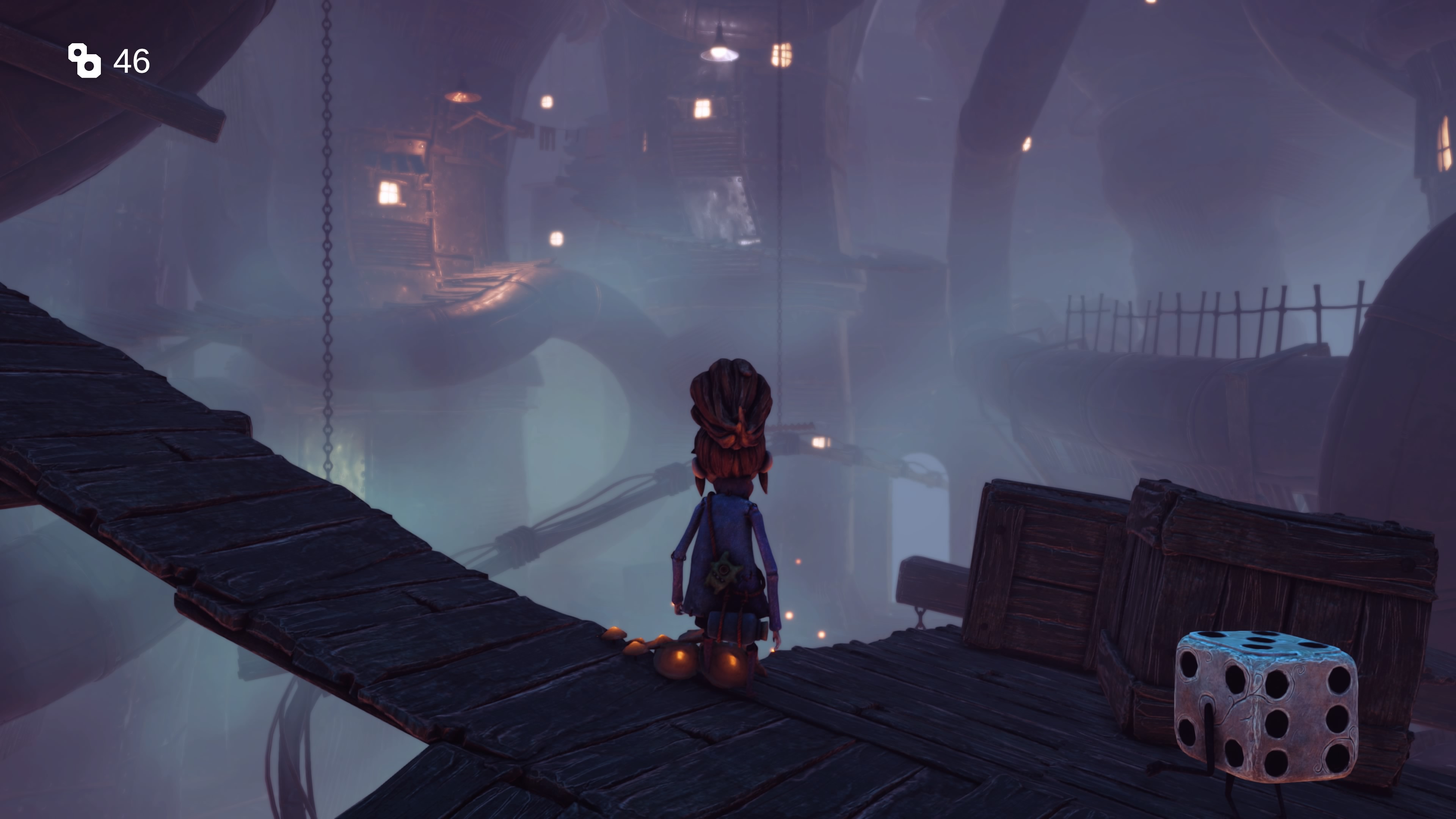
Lost in Random reminds me most of Psychonauts and American McGee’s Alice, yet it completely lacks the maneuverability those games boast. It would have been clever if the game had a series of platforming puzzles that went beyond running around in a circle and stepping on pressure pads.
Gothic bugs
Lost in Random has a few bugs and poor design choices that lead to unnecessary frustration. For example, selecting the "Quit to Main Menu" option does not ask the player to confirm their choice. On two separate occasions, I accidentally quit an encounter and had to redo them.
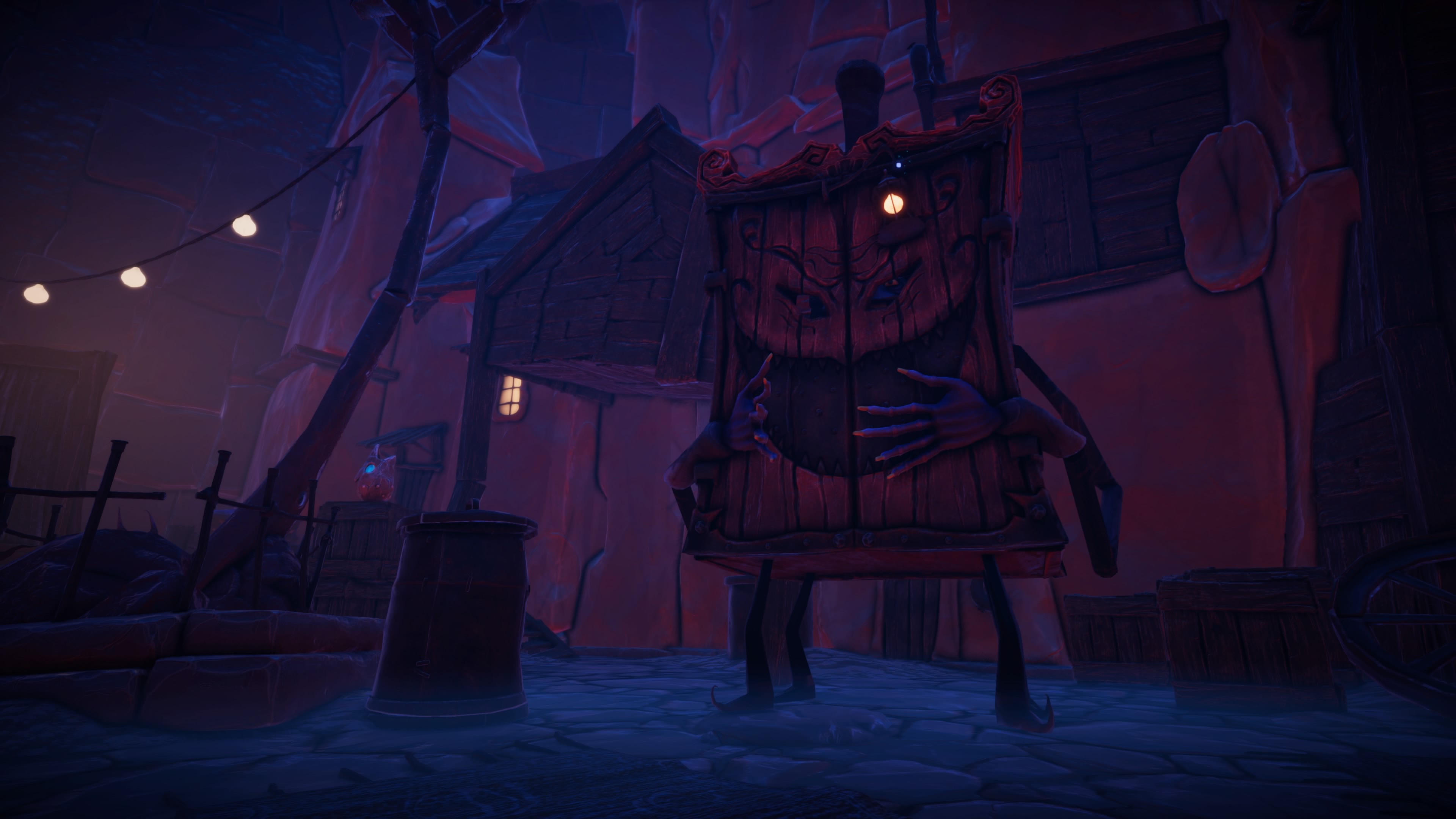
Another annoyance is the inability to remove the game’s subtitles. This isn’t necessarily a big deal, but as someone who prefers to play without text on my screen, it was irksome. I also experienced a single crash while playing Lost in Random, and it was coincidentally during the longest board game level, which meant I had to do it over. Another bug made it so that I couldn’t talk to NPCs or open my map because the game believed I was in the middle of important dialogue. I had to leave the area to fix this bug.
Bottom Line
Lost in Random utilizes stop-motion inspired animation to illustrate an engaging gothic world. There’s plenty of excitement and sorrow throughout the cleverly crafted corners of Random, and thanks to a number of amusing characters, the script is equally witty.
However, Lost in Random is messy. Its combat shines on occasion, but thanks to a poorly realized board game gimmick and some janky base mechanics, it’s rarely as exciting as it should be. It’s also disappointing that there’s a complete omission of platforming, as Random appears to be a world that would greatly benefit from additional verticality in its level design.
Lost in Random doesn’t entirely deliver on its gameplay, but game developer Zoink has done well building the evocative aesthetic of this memorable world. If you’re a fan of films from Laika or Tim Burton, this experience is worth your time.

Self-described art critic and unabashedly pretentious, Claire finds joy in impassioned ramblings about her closeness to video games. She has a bachelor’s degree in Journalism & Media Studies from Brooklyn College and five years of experience in entertainment journalism. Claire is a stalwart defender of the importance found in subjectivity and spends most days overwhelmed with excitement for the past, present and future of gaming. When she isn't writing or playing Dark Souls, she can be found eating chicken fettuccine alfredo and watching anime.
